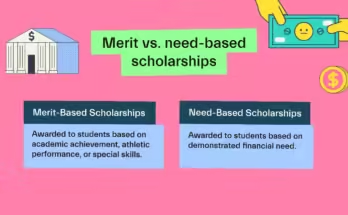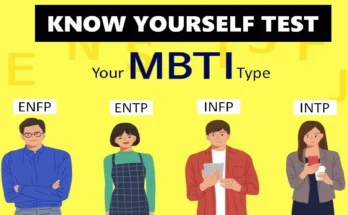Technology has become an integral part of modern education, influencing how students learn and teachers instruct. This blog will explore the significance of technology in education, emphasizing its role in enhancing learning experiences, improving accessibility, and preparing students for the future.
1. Enhanced Learning Experiences
- Interactive Learning: Technology enables interactive learning through digital tools like educational apps, e-books, and online courses, making lessons more engaging.
- Visual and Auditory Learning: Multimedia tools help cater to different learning styles by incorporating visuals, videos, and audio resources.
- Simulation and Modeling: Subjects like science and engineering benefit from simulations and modeling tools that provide practical learning experiences.
- Gamification: Incorporating games in education motivates students and makes learning fun, helping retain complex concepts.
2. Improved Accessibility
- Access to Information: The internet provides students with vast information resources, enabling them to research beyond textbooks.
- Remote Learning: Online platforms allow students to attend classes remotely, ensuring continuity in education during disruptions like pandemics.
- Assistive Technology: Tools like screen readers and speech recognition software help students with disabilities access educational content.
- Global Learning Opportunities: Technology connects students with educators and peers worldwide, promoting global collaboration and cultural exchange.
3. Personalized Learning
- Adaptive Learning Systems: These systems adjust content based on individual student needs, helping them learn at their own pace.
- Data-Driven Insights: Teachers can track student performance in real-time, allowing for timely interventions and personalized feedback.
- Customizable Learning Paths: Technology allows students to choose learning paths that align with their interests and career goals.
- Self-Paced Learning: Online courses and resources enable students to study at their own pace, accommodating different learning speeds.
4. Collaboration and Communication
- Online Collaboration Tools: Platforms like Google Classroom and Microsoft Teams facilitate collaboration among students and teachers.
- Virtual Classrooms: These enable real-time communication and interaction, bridging geographical gaps.
- Discussion Forums and Social Media: Students can participate in discussions and share ideas on platforms designed for educational purposes.
- Parent-Teacher Communication: Technology allows for easy communication between parents and teachers, keeping parents informed about their child’s progress.
5. Skill Development for the Future
- Digital Literacy: Technology in education helps students develop essential digital skills needed in today’s job market.
- Critical Thinking and Problem Solving: Exposure to technological tools enhances students’ critical thinking and problem-solving abilities.
- Collaboration Skills: Working on tech-based projects improves teamwork and collaboration skills.
- Preparation for Tech-Driven Careers: Students gain hands-on experience with the technology they will likely use in their future careers.
6. Cost-Effectiveness and Resource Efficiency
- E-Books and Online Resources: Digital textbooks and online resources reduce the need for physical books, lowering costs for schools and students.
- Efficient Administrative Processes: Technology streamlines administrative tasks like attendance tracking, grading, and scheduling.
- Reduced Paper Usage: Digital submissions and online assessments reduce paper waste, contributing to environmental sustainability.
- Virtual Labs and Simulations: These tools reduce the need for physical labs, making scientific education more accessible and affordable.
7. Continuous Learning and Professional Development
- Online Courses and Certifications: Teachers and students can access courses and certifications to enhance their skills and knowledge.
- Webinars and Online Workshops: These provide opportunities for educators to stay updated with the latest teaching methods and technologies.
- Educational Blogs and Podcasts: Continuous learning is supported by access to a wealth of online content, including blogs and podcasts on educational topics.
- Professional Learning Networks: Educators can connect with peers globally, sharing best practices and resources.
Table 1: Benefits of Technology in Education
| Aspect | Description |
|---|---|
| Interactive Learning | Makes lessons engaging through multimedia tools and educational apps. |
| Improved Accessibility | Provides access to information and learning opportunities for all students. |
| Personalized Learning | Tailors education to individual needs with adaptive learning systems. |
| Collaboration Tools | Facilitates teamwork and communication through online platforms. |
| Skill Development | Prepares students with digital literacy and problem-solving skills. |
| Cost-Effectiveness | Reduces costs with e-books, virtual labs, and efficient administrative processes. |
| Continuous Learning | Offers ongoing professional development opportunities through online resources. |
Table 2: Challenges of Integrating Technology in Education
| Challenge | Description |
|---|---|
| Digital Divide | Disparities in access to technology can widen the gap between students. |
| Teacher Training | Inadequate training can hinder effective technology integration. |
| Cybersecurity Risks | Increased reliance on digital tools raises concerns about data privacy and security. |
| Overreliance on Technology | Excessive use of technology may lead to reduced face-to-face interaction and social skills. |
| Cost of Implementation | Initial costs of acquiring and maintaining technology can be high for some schools. |
8. Addressing the Challenges
- Bridging the Digital Divide: Schools and governments should work towards providing equal access to technology for all students.
- Teacher Training Programs: Investing in professional development ensures educators are equipped to use technology effectively.
- Implementing Cybersecurity Measures: Schools must adopt robust cybersecurity practices to protect student data.
- Balanced Approach to Technology: Educators should balance technology use with traditional teaching methods to maintain social skills.
- Funding and Resources: Schools should seek grants, partnerships, and other funding sources to cover technology costs.
Conclusion
Technology plays a crucial role in modern education by enhancing learning experiences, improving accessibility, and equipping students with the skills needed for the future. While there are challenges, a thoughtful approach to technology integration can maximize its benefits, making education more inclusive, engaging, and effective.
FAQ:-
Q. How does technology enhance teaching and learning?
Answer:- Technology enhances teaching and learning by making lessons more interactive and engaging through multimedia tools, providing access to vast resources online, enabling personalized learning experiences, and facilitating collaboration through digital platforms. It also supports diverse learning styles, offers real-time feedback, and prepares students with essential digital skills for the future.
Q . How does technology affect student learning?
Answer:- Technology positively affects student learning by providing personalized and interactive experiences, offering access to a wealth of information, and enabling self-paced learning. It enhances engagement, supports diverse learning styles, and prepares students with essential digital skills. However, overreliance on technology can reduce face-to-face interactions and potentially distract students if not used effectively.
Q. What is the importance of technology?
Answer:- Technology is crucial as it drives innovation, enhances efficiency, and improves accessibility across various sectors, including education, healthcare, and business. It enables faster communication, access to information, and automation of tasks, making processes more efficient. In education, it personalizes learning, fosters collaboration, and equips individuals with essential skills for a tech-driven future.
Q. How does the role of technology change the teaching learning?
Answer:- The role of technology transforms teaching and learning by shifting from traditional, lecture-based methods to more interactive, student-centered approaches. It enables personalized learning, offers diverse educational resources, and facilitates collaboration beyond the classroom. Teachers can use digital tools for real-time feedback and data-driven instruction, while students benefit from engaging, multimedia-rich experiences and self-paced learning opportunities.



